This day has some hockey history to remember! The fast-paced action on the ice and the talented individuals that skate on it provide some lasting memories. Celebrate the games, teams, players, and events that make hockey a fantastic sport.
Sports History
Hockey Events of the DayNew York Rangers Hockey Team History
-Birth of the Rangers and Early Success (1926-1942):
-May 15, 1926 – The NHL officially granted a second franchise to the city of New York, and that team was named the New York Rangers; the first team, which started play in the previous year, was the New York Americans. Also, the NHL announced that the cities of Chicago and Detroit would be awarded NHL teams to start play in November, provided their rinks were finished, making 10 teams in the NHL.
-Founded in 1926 by Tex Rickard, the Rangers were one of the first American teams in the National Hockey League (NHL).
-Under the guidance of legendary coach Lester Patrick, the Rangers achieved early success, capturing their first Stanley Cup championship in just their second season (1928).
-Throughout the 1930s, the Rangers remained competitive, adding two more Stanley Cup victories (1933 and 1940), solidifying their place among the NHL's elite.
Lean Years and the Curse of 1940 (1942-1960s):
-Following their 1940 Stanley Cup win, the Rangers entered a period of struggle. World War II disrupted the league, and the team faced a lack of consistent talent.
-From 1943 to 1949, the Rangers endured a dismal stretch, posting the worst record in NHL history (6-39-5) in the 1943-44 season. This period fueled speculation about the so-called "Curse of 1940," a perceived jinx that haunted the team for decades.
-Despite flashes of brilliance from players like Andy Bathgate, the Rangers failed to recapture their past glory during this era.
The Original Six Era and Continued Challenges (1960s-1970s):
-The 1960s and 1970s coincided with the "Original Six" era of the NHL, where the Rangers competed against established franchises like the Montreal Canadiens and Toronto Maple Leafs.
-The emergence of expansion teams further intensified competition, making it difficult for the Rangers to find consistent success.
-However, this period saw the rise of fan favorites like Rod Gilbert, known for his exceptional speed and offensive prowess.
The "No Quit in New York" Era and Messier's Magic (1980s-1994):
-The 1980s marked a period of rebuilding for the Rangers. Young talents like Mike Gartner and John Vanbiesbrouck emerged, fostering optimism for the future.
-The iconic "No Quit in New York" marketing campaign embodied the team's resilient spirit and their dedication to the passionate New York fanbase.
-In 1994, the tide finally turned. Led by the legendary captain Mark Messier, a veteran acquired from the Edmonton Oilers, and complemented by players like Brian Leetch, Adam Graves, and Mike Richter, the Rangers broke the "Curse of 1940" and captured their fourth Stanley Cup.
The Post-Messier Era and Modern Times (1994-Present):
-The post-Messier era brought challenges, with the team struggling to maintain championship consistency.
-Yet, the Rangers saw flashes of brilliance with players like Jaromir Jagr and Henrik Lundqvist, a goaltender revered for his exceptional talent and leadership.
-The team reached the Stanley Cup Finals in 2014 but fell short against the Los Angeles Kings.
-In recent years, the Rangers have undergone a rebuild, focusing on developing young talent and building a team for future success.
More Than Just Hockey: A New York Icon:
The New York Rangers are more than just a hockey team; they are a cultural icon ingrained in the fabric of New York City. Their passionate fanbase, the "Garden Faithful," fills Madison Square Garden with electrifying energy on game nights.
Chicago Blackhawks Hockey Team History
Early Days and Initial Success (1926-1944):
-In 1926, Chicago entered the newly formed National Hockey League (NHL) with the arrival of the Black Hawks (later changed to Blackhawks). The team was named after a Black Hawk Native American military unit, reflecting the owner's fascination with American history.
-The early years were marked by inconsistency. However, the Blackhawks found success in the 1930s under the leadership of owner Frederic McLaughlin, who emphasized building an "all-American" team.
-Back-to-back Stanley Cup victories in 1934 and 1938 solidified Chicago as a major force in the NHL. Legends like Charlie Gardiner in goal and Johnny Gottselig on offense led the charge.
Lean Years and Rebuilding (1944-1960s):
-Following the initial success, the Blackhawks faced a period of decline. Frequent coaching changes and a lack of top-tier talent resulted in playoff droughts.
-The arrival of General Manager Tommy Ivan in the 1950s marked a turning point. He implemented a strong farm system that would produce future stars in the coming years.
The Golden Age: Hull, Mikita, and the Rise of a Dynasty (1960s-1970s):
-The 1960s ushered in a golden age for the Blackhawks. The arrival of Bobby Hull, a prolific goal scorer with his iconic slap shot, and Stan Mikita, a gifted playmaker, transformed the team's offensive capabilities.
-Under coach Roger Neilson, the Blackhawks adopted an aggressive, fast-paced style. They reached the Stanley Cup Finals in 1961 and 1962, eventually winning the coveted trophy in 1961, defeating the Detroit Red Wings.
-Goalie Glenn Hall provided a strong defensive presence, forming a formidable partnership with Hull and Mikita. This core group continued to dominate the league throughout the decade, capturing another Stanley Cup in 1967 against the Montreal Canadiens.
A Period of Transition and Rebuilding (1970s-1990s):
-The departure of key players like Hull and Mikita marked a period of transition for the Blackhawks. Despite flashes of brilliance, including a trip to the Stanley Cup Finals in 1973, the team struggled to maintain consistent success.
-The 1980s and 1990s were marked by inconsistency. The Blackhawks drafted some notable talents like Denis Savard and Steve Larmer, but overall team success remained elusive.
The Deadliest Decade: Dynasty Reborn (2000s-2010s):
-The arrival of the new millennium brought a resurgence for the Blackhawks. Drafting franchise cornerstones like Jonathan Toews and Patrick Kane in the early 2000s laid the foundation for another dynasty.
-The combination of skilled young players like Kane and Toews with veterans like Marian Hossa and Duncan Keith under coach Joel Quenneville created a juggernaut.
The Blackhawks won three Stanley Cup championships in a six-year span (2010, 2013, 2015), establishing themselves as one of the most dominant teams of the modern era. Their fast-paced, offensively charged style captivated fans worldwide.
Tampa Bay Lightning Hockey Team History
Birth of the Bolts: An Expansion Gamble (1990s):
In the late 1980s, the NHL, recognizing the potential for growth in the sun-drenched state of Florida, announced expansion plans. Two rival groups in Tampa Bay submitted bids – one led by hockey legends Phil Esposito and Tony Esposito, the other by Peter Karmanos and Jim Rutherford. Ultimately, the Esposito group won the bid, and in 1992, the Tampa Bay Lightning were born. The name "Lightning" was chosen for its connection to Tampa Bay's reputation as the "Lightning Capital of North America."
Early Struggles and Establishing an Identity (1990s):
Like most expansion teams, the Lightning faced initial struggles. Building a competitive roster from scratch was a challenge. The first few seasons were marked by losing records and a search for an identity. However, the Esposito brothers' leadership and the passionate support of the local fanbase kept hope alive.
A Turnaround and the Emergence of Stars (2000s):
The arrival of the new millennium brought a turning point for the Lightning. The drafting of Vincent Lecavalier and the acquisition of Brad Richards through the draft and trades, respectively, solidified their offensive core. The emergence of a young goaltender named Marty Turco provided stability in net. This new generation of talent, coupled with the shrewd management of general manager Rick Dudley, propelled the Lightning to their first playoff appearance in 1996.
The "St. Louis Line" and Stanley Cup Glory (2000s-2010s):
The acquisition of Martin St. Louis in 2000 proved instrumental. St. Louis, Lecavalier, and Richards formed a dominant offensive line affectionately known as the "St. Louis Line." This offensive firepower, combined with a strong defensive core, propelled the Lightning to their first Stanley Cup Finals appearance in 2004, where they ultimately fell short. However, the taste of championship glory fueled their determination.
The Rise of "The Machine" and Back-to-Back Championships (2010s-2020s):
The arrival of Steven Stamkos as the first overall pick in the 2008 draft ushered in a new era. Stamkos, along with players like Victor Hedman and Nikita Kucherov, formed the core of a dominant team nicknamed "The Machine." Under the guidance of head coach Jon Cooper, the Lightning perfected a high-octane, offensive style coupled with a stifling defense. This culminated in consecutive Stanley Cup victories in 2020 and 2021, solidifying the Lightning's place among the NHL's elite.
A Legacy of Resilience and Championship Excellence:
The Tampa Bay Lightning's history is a testament to perseverance and building a winning culture. From the early struggles of an expansion team to the back-to-back Stanley Cup victories, the Lightning have become a force to be reckoned with. Their passionate fanbase, talented players, and astute management have all contributed to their success. The Lightning's story continues to unfold, and with their dedication to excellence, they are poised to leave a lasting legacy in the annals of NHL history.
The NHL's Western Conference History
Expansion and Early Years (1967-1980s):
-1967: The NHL doubles in size, creating the Eastern and Western Conferences with six teams each. Original Western Conference members included the Chicago Blackhawks, Los Angeles Kings, Minnesota North Stars (later Dallas Stars), Oakland Seals (later California Golden Seals and eventually folded), St. Louis Blues, and Vancouver Canucks.
-Early Domination by Canadian Teams: Montreal Canadiens, a dominant force in the East, found fierce competition in the West with teams like the Chicago Blackhawks (Stanley Cup winners in 1961) and the Montreal Canadiens' arch-rivals, the Toronto Maple Leafs (who joined the West during expansion).
The Rise of the "Gretzky Era" and Expansion (1980s-1990s):
-The arrival of Wayne Gretzky, "The Great One," with the Edmonton Oilers in 1979, ushered in a new era of offensive dominance. The Oilers, led by Gretzky and his linemate Mark Messier, became a nearly unstoppable force, winning four Stanley Cups in five years (1984-1988).
-Continued Expansion: The Western Conference witnessed further growth with the addition of franchises like the Calgary Flames (1980, Stanley Cup winners in 1989), Winnipeg Jets (1992, later relocated to become the Arizona Coyotes in 1996), and the San Jose Sharks (1991).
The "Battle of Alberta" and New Rivalries (1990s-2000s):
-The rivalry between the Alberta-based Calgary Flames and Edmonton Oilers intensified, creating one of the NHL's most heated rivalries, known as the "Battle of Alberta."
-New contenders emerged: The Detroit Red Wings (originally an Eastern Conference team) moved to the West in 1993, igniting a new rivalry with the Colorado Avalanche (established in 1995) and sparking a period of Western Conference dominance. These three teams combined for six Stanley Cup victories between 1996 and 2008.
Recent Years and Continued Growth (2010s-Present):
-The Western Conference continues to evolve with the addition of the Vegas Golden Knights (2017), who defied expectations by reaching the Stanley Cup Final in their inaugural season.
-Recent Stanley Cup champions in the West include the Chicago Blackhawks (2013, 2015), the Los Angeles Kings (2012, 2014), and the St. Louis Blues (2019).
-The conference boasts a diverse group of talented players and teams, fostering thrilling competition and ensuring the Western Conference remains a force to be reckoned with in the NHL.
A Legacy of Grit, Skill, and Unforgettable Moments:
The NHL's Western Conference has carved its niche in hockey history. From the offensive brilliance of the "Gretzky Era" to the intense rivalries and recent success stories, the West has provided countless iconic moments and established itself as a breeding ground for exceptional players and passionate fanbases. As the NHL continues to evolve, the Western Conference promises to remain a hotbed of competition and a driving force in the future of the sport.
Calgary Flames Hockey Team History
Atlanta's Expansion Team (1972-1980):
-Founded in 1972 as one of two expansion teams alongside the New York Islanders, the Flames entered the NHL amidst competition from the rival World Hockey Association (WHA).
-The Atlanta Flames struggled in their early years, failing to qualify for the playoffs in their first six seasons. Despite flashes of brilliance from players like Tom Lyons and Dale Tallon, financial difficulties plagued the franchise.
A Move North: Birth of the Calgary Flames (1980-1989):
-In 1980, seeking a more stable financial footing and a passionate fanbase, the Flames relocated to Calgary, Alberta. This move marked the beginning of a new era for the franchise.
-The Calgary faithful embraced the team with open arms, filling the Stampede Corral and creating a vibrant atmosphere. Under the leadership of GM Al Coates and coaches like Bob Gainey, the Flames quickly transformed into a competitive force.
The Rise of a Dynasty and Stanley Cup Glory (1980s):
-Calgary witnessed the emergence of a young, talented core featuring Lanny McDonald, Mike Keenan, and rookie sensation Hakan Loob. This group, combined with the veteran leadership of players like Bob Baun and Jim Peplinski, propelled the Flames to their first playoff appearance in Calgary in 1981.
-The Flames became a perennial contender throughout the 1980s, reaching the Stanley Cup Finals in 1986 but falling short to the Montreal Canadiens. However, their relentless pursuit of Lord Stanley's Cup paid off in 1989.
-Led by MVP defenseman Doug Gilmour and the goaltending duo of Mike Vernon and Trevor Kidd, the Flames defeated the Montreal Canadiens in a thrilling six-game series, capturing Calgary's first and only Stanley Cup championship.
Post-Dynasty Years and Rebuilding (1990s-2003):
-Following their championship victory, the Flames faced challenges maintaining their dominance.
-Key players like Gilmour and McDonald departed, and the team entered a period of rebuilding.
Despite flashes of brilliance from players like Sergei Makarov and Theoren Fleury, the Flames struggled to consistently reach the playoffs in the late 1990s and early 2000s.
The Return to Relevancy and the Red Mile (2004):
-The 2003-04 season was a turning point for the Flames. Led by the dynamic duo of Jarome Iginla and Miikka Kiprusoff, the Flames embarked on a magical run, capturing the hearts of fans and the city.
Calgary rallied behind their team, turning the streets around the Saddledome into a sea of red, a phenomenon dubbed the "Red Mile." The Flames reached the 2004 Stanley Cup Finals but were ultimately defeated by the Tampa Bay Lightning.
Boston Bruins Hockey Team History
Early Days and Becoming Part of the "Original Six" (1924-1940s):
-Founded in 1924, the Bruins were the first American team to join the NHL, becoming part of the prestigious "Original Six" group alongside the Montreal Canadiens, Toronto Maple Leafs, Detroit Red Wings, Chicago Blackhawks, and New York Rangers.
-The early years saw the Bruins establish themselves as a competitive force. Players like Hall of Famers Eddie Shore, Dit Clapper, and Tiny Thompson led the team to their first Stanley Cup victory in 1929.
-The 1930s and 1940s were marked by consistency and another Stanley Cup win in 1939. This period also saw the emergence of stars like Bill Cowley and Roy Conacher.
The Bobby Orr Era and the "Golden Age" of Bruins Hockey (1960s-1970s):
-The 1960s were a challenging time, with the Bruins finishing last in the league for six out of seven seasons. However, the tide began to turn with the arrival of young phenom Bobby Orr in 1966.
-Orr's dynamic offensive and defensive skills, coupled with his iconic slapshot, revolutionized the game. Alongside Phil Esposito, a prolific goal-scorer, they formed a potent duo that led the Bruins back to prominence.
-The "Golden Age" of Bruins hockey arrived in the 1970s.
-The team, fueled by Orr and Esposito, captured two Stanley Cups in 1970 and 1972, etching their names in Bruins lore.
Post-Orr Era and Rebuilding Years (1970s-2000s):
-Bobby Orr's departure due to injuries left a significant void. The Bruins underwent a period of rebuilding throughout the late 1970s and 1980s. However, they remained competitive, reaching the playoffs on several occasions.
-Ray Bourque, a future Hall of Famer, emerged as the team's star during this era, showcasing exceptional offensive talent and leadership. Despite his individual brilliance, the Bruins fell short of another Stanley Cup title.
The Rise of a New Dynasty and Continued Success (2000s-Present):
-The arrival of new ownership and a focus on player development ushered in a new era of success. The Bruins drafted future stars like Patrice Bergeron and Zdeno Chara, who became the core of a dominant team.
The acquisition of the dynamic scoring duo of Brad
-Marchand and David Pastrnak further bolstered the offense. This combination, coupled with a strong defense led by Chara, propelled the Bruins back to the Stanley Cup Finals.
-In 2011, the Bruins captured their sixth Stanley Cup title, defeating the Vancouver Canucks. They continued to be a force in the Eastern Conference, reaching the finals again in 2013.
Detroit Red Wings Hockey Team History
Early Days and Name Changes (1926-1932):
-Founded in 1926 as the Detroit Cougars, they were one of three teams to join the fledgling National Hockey League (NHL) that year.
-The team struggled financially and briefly changed their name to the Detroit Falcons in 1930 before settling on the Detroit Red Wings in 1932.
Early Success and the "Terrible Ted" Era (1930s-1950s):
-The Red Wings found their footing under coach and general manager Jack Adams, capturing their first Stanley Cup titles in 1936 and 1937.
-The arrival of future Hall of Famer Syd Howe in 1938 marked the beginning of a successful era.
-The 1950s saw the rise of another legend, Gordie Howe, a dominant right-wing known for his toughness, scoring prowess, and longevity. Alongside linemates Ted Lindsay and Sid Abel, they formed the iconic "Production Line," leading the Red Wings to Stanley Cup victories in 1950, 1952, 1954, and 1955.
Lean Years and The "Russian Revolution" (1960s-1990s):
-Following the retirement of key players, the Red Wings faced a period of struggle in the 1960s and 1970s.
-The arrival of Soviet stars Sergei Fedorov and Slava Fetisov in the late 1980s, nicknamed the "Russian Revolution," revitalized the team.
-Under coach Scotty Bowman, the Red Wings returned to Stanley Cup glory in 1997 and 1998, led by players like Steve Yzerman, Brendan Shanahan, and Nicklas Lidstrom.
The Dead Things Era and Continued Success (2000s-Present):
-The early 2000s saw the emergence of a young core led by Pavel Datsyuk and Henrik Zetterberg, nicknamed the "Two-headed Monster" for their exceptional two-way play.
-This core, along with veterans like Nicklas Lidstrom, propelled the Red Wings to another Stanley Cup victory in 2002.
-Despite challenges in recent years, the Red Wings remain a competitive team, consistently making playoff appearances and developing young talent.
A Legacy of Excellence and "Hockeytown":
-The Detroit Red Wings have established themselves as one of the most successful franchises in NHL history, boasting 11 Stanley Cup championships (tied for most by an American team) and numerous Hall of Famers. Their passionate fanbase has earned them the nickname "Hockeytown," signifying the city's deep connection to the sport. The Red Wings' rich history, legendary players, and unwavering commitment to excellence continue to inspire generations of fans and players alike.
Arizona Coyotes Hockey Team History
Winnipeg Roots: The WHA Era and NHL Entry (1971-1979):
-The story begins not in Arizona, but in Winnipeg, Manitoba, Canada. In 1971, the Winnipeg Jets were founded as part of the upstart World Hockey Association (WHA).
-The Jets were a force in the WHA, capturing three league championships (1976, 1978, 1979).
-Superstar Bobby Hull, who signed with the Jets from the NHL, brought star power and helped solidify the team's early success.
-With the WHA's demise in 1979, the Jets, along with three other teams, were absorbed into the NHL, marking their official entry into the established league.
Early Years in Phoenix: Establishing an Identity (1996-2000):
-In 1996, a major shift occurred. The Jets relocated to Phoenix, Arizona, becoming the Phoenix Coyotes. This move marked the beginning of a new chapter in the franchise's history.
-The Coyotes struggled to find consistent success in their early Phoenix years. Despite flashes of brilliance from players like Keith Tkachuk and Shane Doan, the team failed to qualify for the playoffs in their first four seasons.
-However, the arrival of hockey legend Wayne Gretzky as a minority owner in 2000 and later as head coach in 2005 brought renewed hope and excitement to the franchise.
Division Champions and Financial Uncertainty (2000s):
-Under Gretzky's leadership, the Coyotes saw an improvement in their performance. They clinched their first division title in 2012, a testament to the team's growing competitiveness.
-However, the franchise also faced financial difficulties throughout the 2000s. Ownership struggles and relocation threats cast a shadow over the team's stability.
The Renaissance Coyotes and the Arizona
Rebranding (2010s-Present):
-The NHL took over ownership of the team in 2009, preventing a potential relocation. This period ushered in a renewed focus on building a competitive team and establishing a strong fan base in Arizona.
-The rebranding to the Arizona Coyotes in 2014 marked a fresh start for the franchise. The team embraced the desert identity, fostering a strong connection with the local community.
-Despite flashes of young talent and playoff appearances, the Coyotes haven't yet captured the ultimate prize – the Stanley Cup. However, their dedication to player development and commitment to Arizona continues to build a loyal fanbase.
Toronto Maple Leafs Hockey Team History
Early Days and the Birth of a Legend (1917-1927):
The Maple Leafs' story began in 1917, amidst the fledgling years of the National Hockey League (NHL). Initially known as the Toronto Arenas, they captured the inaugural Stanley Cup against the Vancouver Millionaires. However, financial difficulties forced the team to withdraw from the league soon after.
In 1919, they returned as the Toronto St. Patricks, reflecting the city's large Irish population. Conn Smythe, a visionary businessman, purchased the team in 1927 and renamed them the "Toronto Maple Leafs," a symbol of Canada's national identity.
A Dynasty Takes Root: The Winning Tradition (1930s-1950s):
The 1930s and 1940s marked a golden age for the Maple Leafs. Led by legendary coach Hap Day and iconic players like "Ace" Bailey and Syl Apps, they established a dominant dynasty. Their fast-paced, offensive style, dubbed the "Toshiba Rebound," overwhelmed opponents. This era saw four Stanley Cup victories, solidifying the Leafs' place as a powerhouse in the NHL.
The Post-Apps Era and a Quest for Redemption (1950s-1960s):
Following the retirement of captain Ted Apps in 1948, the Leafs entered a period of transition. While they remained competitive, their dominance waned. The arrival of superstars like Frank Mahovlich and Tim Horton in the 1960s rekindled hope, culminating in another Stanley Cup win in 1964.
The Curse of 1967 and the Long Wait (1967-Present):
A controversial officiating call in the 1967 Stanley Cup Finals against the Montreal Canadiens marked a turning point. Many fans believe this incident ushered in a "curse" that has kept the Stanley Cup out of Toronto ever since.
Despite flashes of brilliance with players like Darryl Sittler, Wendel Clark, Mats Sundin, and Auston Matthews, the Leafs haven't reached the promised land. They've come close, reaching the Conference Finals on several occasions, but the ultimate prize remains elusive.
More Than Just Cups: A Legacy of Passion and Identity:
The Maple Leafs' legacy transcends Stanley Cup victories. They are a cultural icon in Canada, representing the nation's passion for hockey. Their iconic blue and white jerseys are a source of national pride, and "Maple Leafs Nation" is a testament to their unwavering fanbase.
Carolina Hurricanes Hockey Team History
-Roots in New England (1972-1997):
-The story begins with the Hartford Whalers, founded in 1972 as a member of the World Hockey Association (WHA). Despite early success, the WHA merged with the NHL in 1979, and the Whalers found themselves struggling to compete financially in a crowded market.
-The Whalers boasted talented players like Gordie Howe (briefly playing alongside his sons), Ron Francis, and Kevin Dineen, but consistent playoff success eluded them.
-Transplanted to Carolina (1997-Present):
-Facing financial difficulties and dwindling attendance, the Whalers relocated to Raleigh, North Carolina, in 1997, becoming the Carolina Hurricanes.
-The early years in Carolina were marked by a period of rebuilding. However, the Hurricanes quickly embraced their new identity, adopting a storm-themed logo and colors that resonated with the local fanbase.
-The Rise of a Contender (1999-2006):
-The late 1990s and early 2000s saw the emergence of a talented core group of players like Ron Francis, Jeremy Roenick, and eventually, the electrifying Erik Cole.
-The Hurricanes reached their first Stanley Cup
Finals appearance in 2002, ultimately falling to the Detroit Red Wings. This run ignited a passionate fanbase and established the Hurricanes as a force in the Eastern Conference.
-A Championship and Beyond (2006-Present):
-In 2006, the Carolina Hurricanes, led by the dynamic duo of Eric Staal and Justin Williams, captured their first Stanley Cup against the Edmonton Oilers. This victory cemented their place in Carolina sports history and solidified their fanbase's loyalty.
-The post-championship era has been a mixed bag for the Hurricanes. They've made several playoff appearances but haven't reached the Stanley Cup Finals again. Recent years have seen a focus on developing young talent and building a team for sustained success.
-A Legacy of Resilience and Community:
The Carolina Hurricanes' journey is a testament to resilience and the power of a passionate fanbase. Despite facing challenges, the team has become an integral part of the Carolina community, actively engaging in charitable endeavors and fostering a culture of inclusivity.
May 4 Numbers
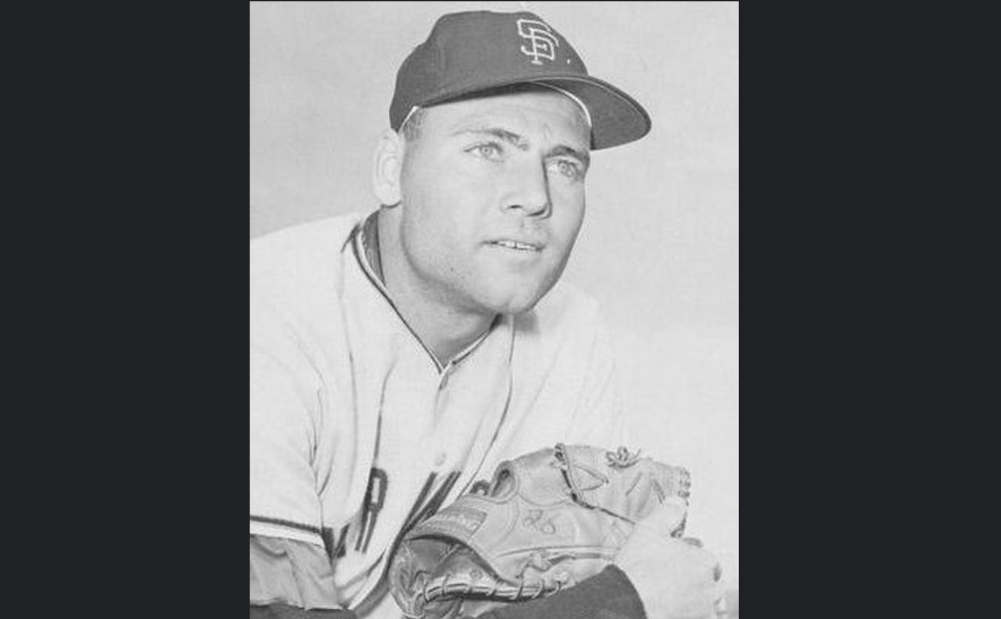
Sports history is made every day of the year. We will preserve at least a small sampling from some great athletes every day based on the uniform number they wore. 4 - 26 - 22 - 34 - 13 - 27 - 87 - 8 May 4, 1871 - The first official league game of baseball was played in the National Assoc...
- The use of a "banner" counts as 10 words!
May 3 Numbers
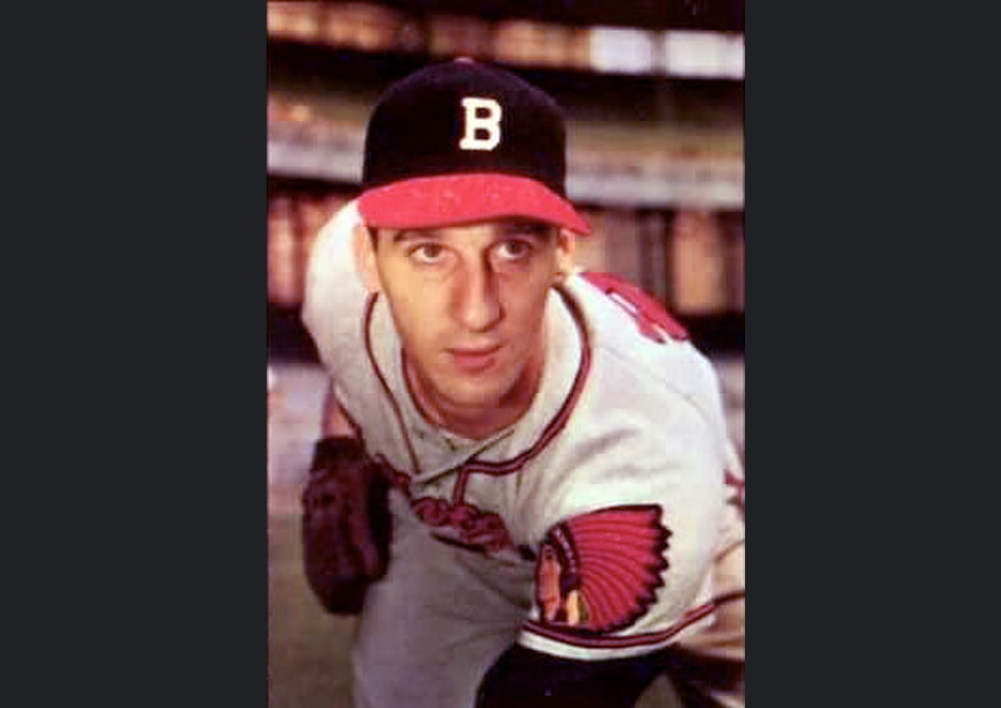
Sports history is made every day of the year. We will preserve at least a small sampling from some great athletes every day based on the uniform number they wore. 9 - 5 - 12 - 21 - 44 - 6 - 8 - 16 - 23 May 3, 1936 - A big event in New York Yankee history occurred. Number 9, Joe DiMaggio ...
- The use of a "banner" counts as 10 words!
May 2 Numbers
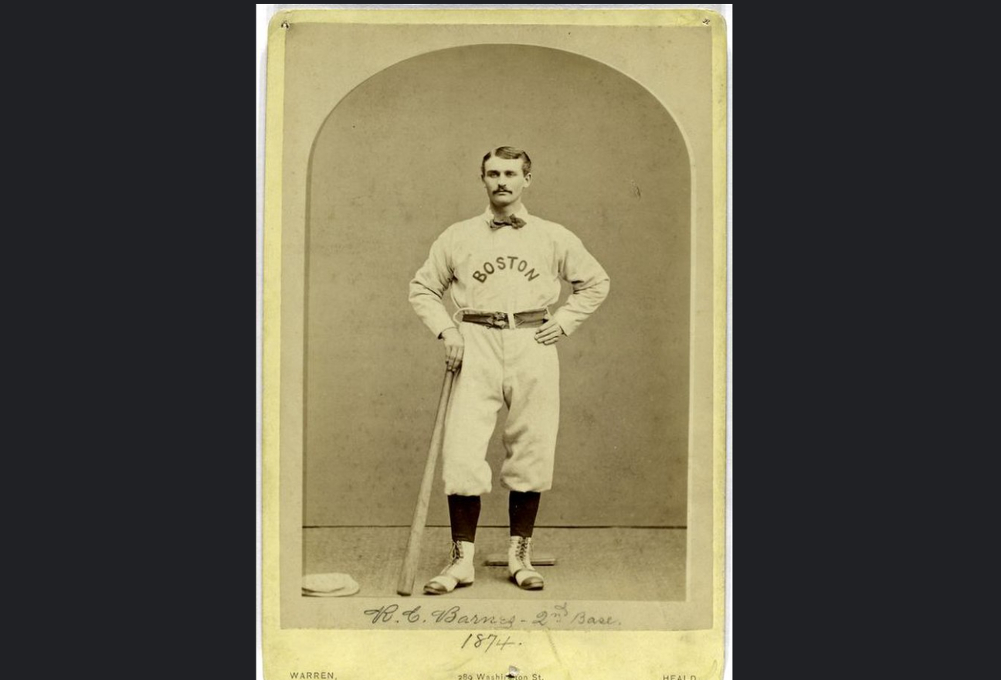
Sports history is made every day of the year. We will preserve at least a small sampling from some great athletes every day based on the uniform number they wore. 4 May 2, 1876 - Second baseman for the Chicago White Stockings, Ross Barnes hit the first home run in National League history...
- The use of a "banner" counts as 10 words!
May 1 Numbers
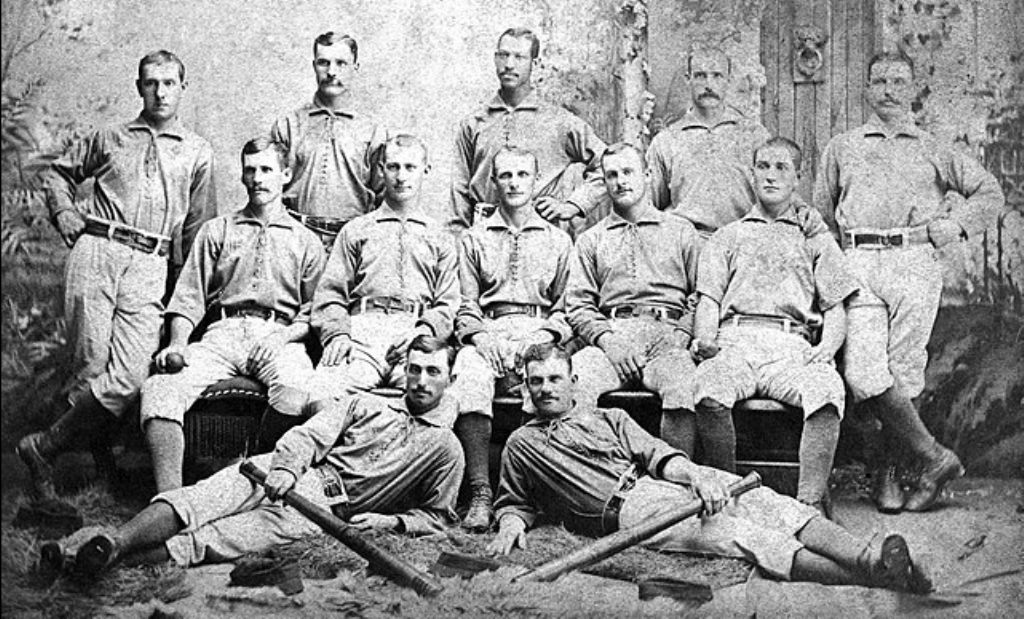
Sports history is made every day of the year. We will preserve at least a small sampling from some great athletes every day based on the uniform number they wore. 3 - 23 - 1 - 4 May 1, 1884 - The Toledo Blue Stockings made history by signing catcher Moses Fleetwood Walker. It doesn't...
- The use of a "banner" counts as 10 words!
April 30 Numbers
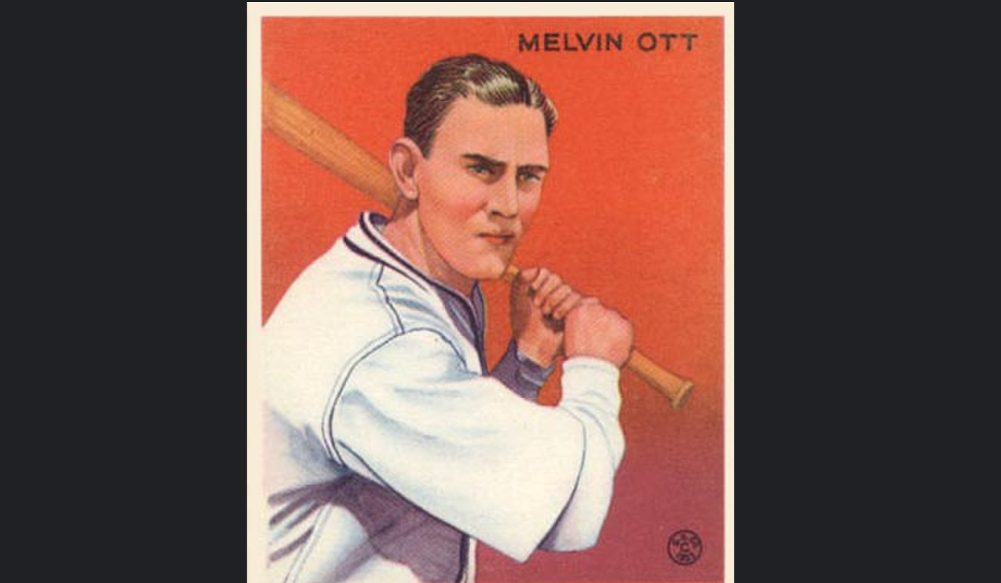
Sports history is made every day of the year. We will preserve at least a small sampling from some great athletes every day based on the uniform number they wore. 4 - 17 - 6 - 22 - 33 - 1 April 30, 1922 - Chicago White Sox pitcher Charlie Robertson, threw a perfect game as the...
- The use of a "banner" counts as 10 words!
April 29 Numbers
_for_Old_Judge_Cigarettes_MET_DP846372.jpg?https://jerseydispatch.com/pfeL/p/c312642c0431e75b485e432232c99c1c/website/Daily-Sports-Uniform-Number-History/April/April-29-Numbers/images/.640px-Charles_Thomas__Charlie__Reilly,_3rd_Base,_St._Paul_Apostles,_from_the_Old_Judge_series_(N172)_for_Old_Judge_Cigarettes_MET_DP846372.jpg)
Sports history is made every day of the year. We will preserve at least a small sampling from some great athletes every day based on the uniform number they wore. 14 - 9 April 29, 1892 - Charlie Reilly of the Philadelphia Phillies becomes Major League Baseball's first pinch hitt...
- The use of a "banner" counts as 10 words!






